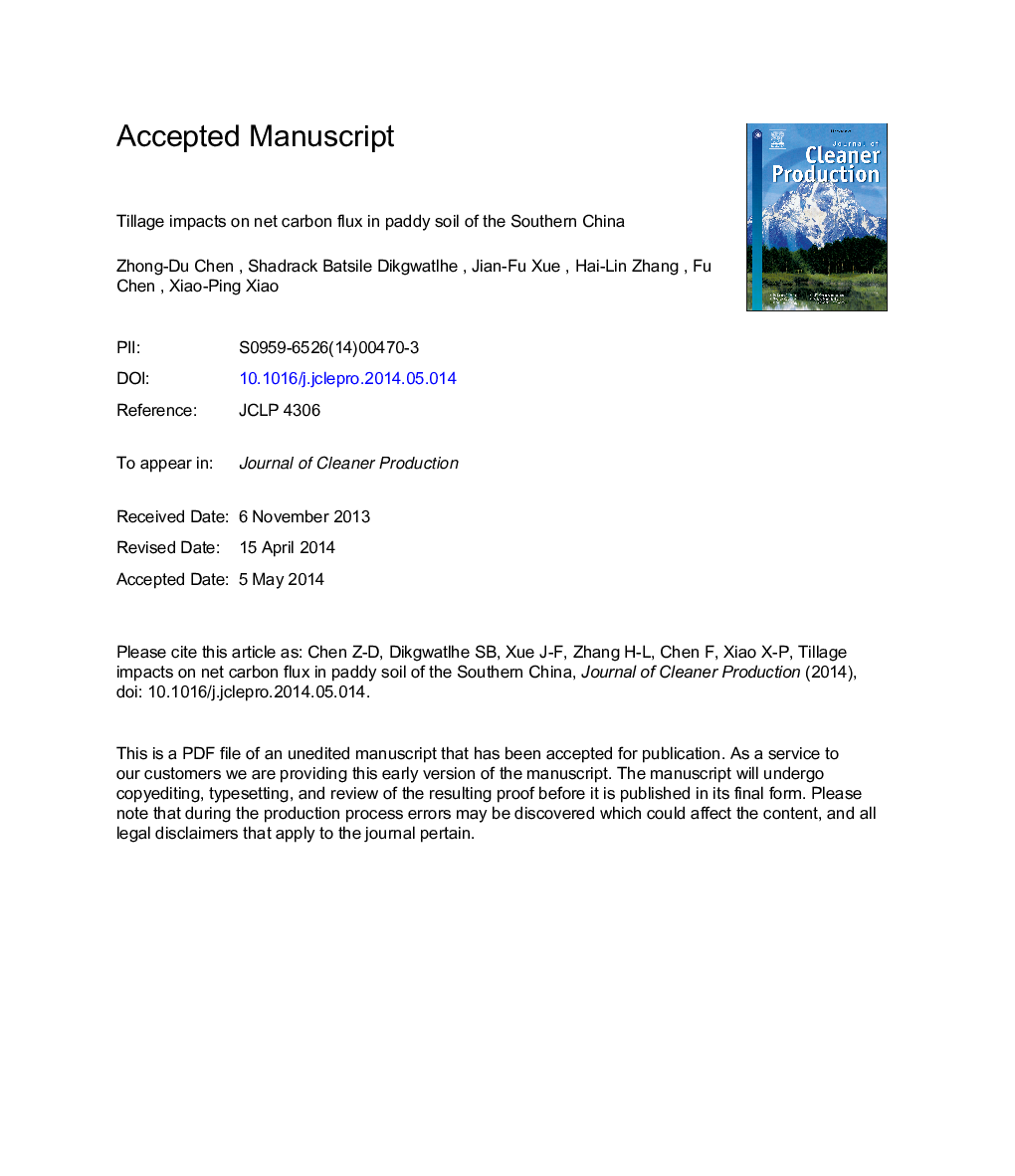| Article ID | Journal | Published Year | Pages | File Type |
|---|---|---|---|---|
| 8103491 | Journal of Cleaner Production | 2015 | 31 Pages |
Abstract
Scientific regulation of carbon (C) flows under conservation tillage is of great significance for mitigating C emission to the atmosphere and increasing C sequestration potential in soils. The objective of this study was to assess tillage impacts on C cycle from a situ field experiment and identify potential tillage practices for C-smart technology in paddy soils of the Southern China. A field experiment was conducted during 2005-2011, including conventional tillage without residue retention (CT), conventional tillage with residue retention (CTS), rotary tillage with residue retention (RTS), and no-till with residue retention (NTS). We computed SOC concentrations, SOC stocks and C emissions from farm inputs with time, and results in values representing a change in net carbon flux under different tillage systems in a double rice (Oryza sativa L.) cropping system. The annual increase rates of SOC stocks were 452.6, 523.3, 1340.8, and 2385.4 kg haâ1 yrâ1 from 2007 to 2011 under CT, CTS, RTS, and NTS, respectively. The annual C emissions under CT, CTS, RTS, and NTS were 1182.5, 1182.5, 1152.5, and 1139.2 kg C-eq haâ1 yrâ1, respectively. Among the treatments, NTS treatment had the lowest net C flux with â1246.2 kg C-eq haâ1 yrâ1. Taking CT as the baseline, the relative net C flux under RTS and NTS were â918.2 and â1976.1 kg C-eq haâ1 yrâ1, respectively. This suggests that adoption of conservation tillage would be beneficial in the reduction of GHG emission and could be a good option for C-smart agriculture in double rice cropping regions.
Related Topics
Physical Sciences and Engineering
Energy
Renewable Energy, Sustainability and the Environment
Authors
Zhong-Du Chen, Shadrack Batsile Dikgwatlhe, Jian-Fu Xue, Hai-Lin Zhang, Fu Chen, Xiao-Ping Xiao,
